How long does it take to learn a language? (Based on YOUR situation)
by Marissa Blaszko · January 4, 2022
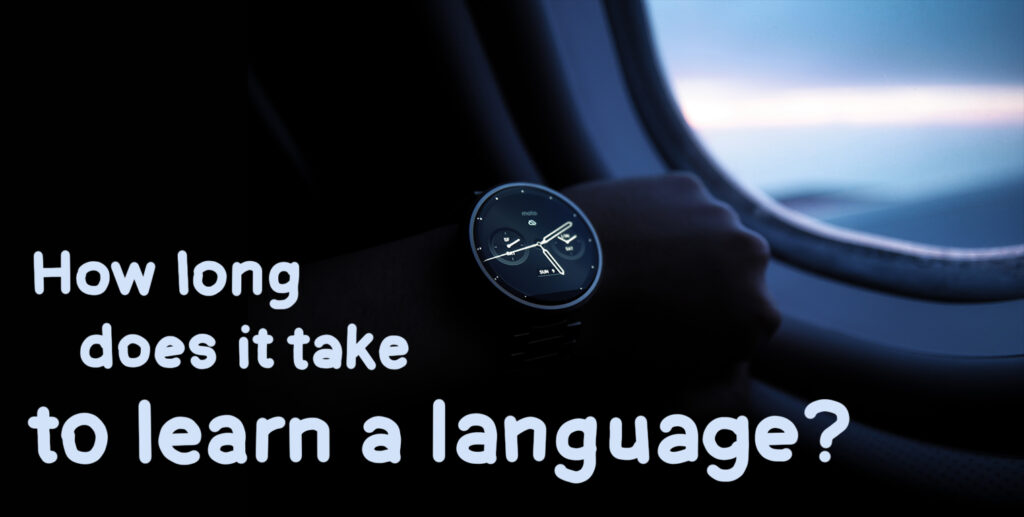
How long does it take to learn a language?
Well, that depends on a lot of factors.
In 3 steps, this tutorial will help you calculate how long it will take you to learn any specific language.
Then, it’ll show you different ways to use this information to measure your success as you learn a language.
To calculate how long it will take YOU to learn a language, grab a pen and paper and follow along with this tutorial!
Navigation
[Language Learning Time Calculator]
STEP 1: Pick A Language
STEP 2: Account for Your Previous Experiences
STEP 3: Factor In Your Time, Budget, and Quality of Tools
[How To Use This Info to Learn a Language]
2a. Measuring Your Level
2b. Measuring Your Vocabulary
2c. Case Study
PART 1:
How Long Will it Take YOU To Learn a Language?
There is no one answer to how long does it take to learn a language, so in 3 steps we’re going to figure out the two biggest variables: who you are and what the language is.
STEP 1: What language do you want to learn?
If a language is similar to English, it will be easier to learn.
If a language is quite different from English, it will be harder to learn.
If a language is very different from English, it will be the hardest to learn.
So how do we decide how similar or different a language is to English?
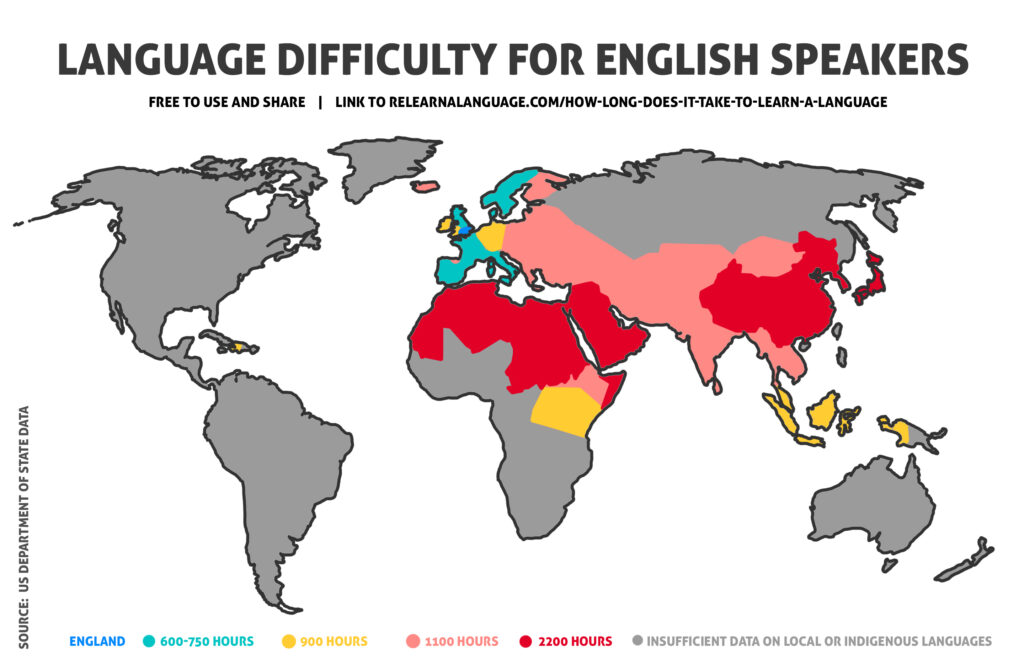
Every year, the US State Department trains thousands of workers in languages every year.
Based on their decades of data, they’ve found roughly 4 categories of language difficulty.
The image tables are taken directly from the state department website. [source]
And under each image table, you’ll see what other languages will likely fall into that same category based on language family.
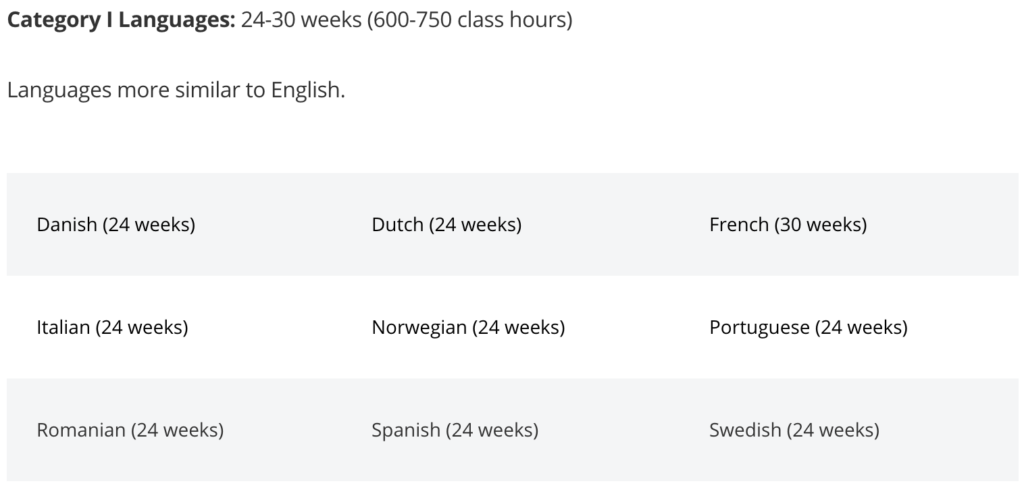
OTHER POSSIBLE CATEGORY 1 LANGUAGES:
- Other Living Romance Language: Catalan, Sicilian, Venetian, Sardinian, Galician, Occitan, Ladino, Aragon, etc.
- Other Germanic Languages: Faroese, Scots, Frisian, Low German varieties

OTHER POSSIBLE CATEGORY 2 LANGUAGES:
- Dormant European Languages: Latin, Old Norse
- Celtic Languages: Welsh, Cornish, Breton, Irish, Scottish Gaelic, Manx
- Other Creole and Pigeon Languages
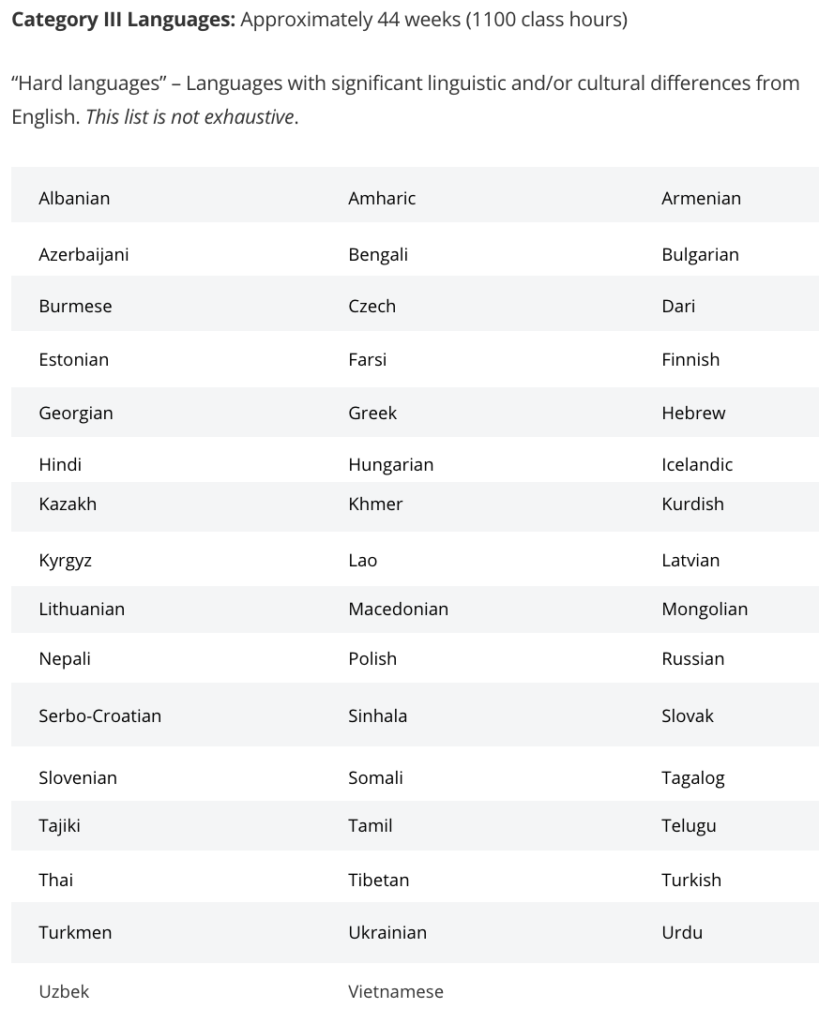
OTHER POSSIBLE CATEGORY 3 LANGUAGES:
- Other Slavic & Baltic Languages: Belarusian, Macedonian, Latvian
- European Language Isolates: Uralic, Basque, Kalmyk, Maltese, Cypriot Arabic, Sami
- Other Dravidian Languages of India: Telugu, Kannad, Malayalam, Kolami, Kurukh–Malto, Brahui, etc.
- Other Indo-Aryan languages of India: Punjabi, Marathi, Gujarati, Bhojpuri, etc
- Other Iranian Languages: Pashto, Persian, Balochi, etc
- Other Semitic Languages: Tigre, Tingrnya, etc
- Other Afro-Asiatic Languages: Afar, Hausa, Orojmo
- Niger-Congo Languages Western-Central: Yoruba, Igbo, Fula, Zulu, Swahili, Wolof, Fula, Mande, etc
- Nil-Saharan Languages of Central Africa
- *Likely, most other African and American languages. However, there isn’t linguistic evidence to be certain.
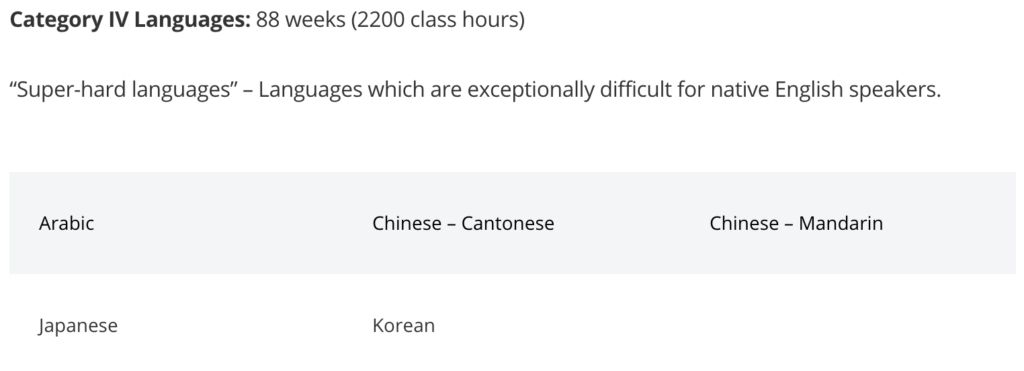
OTHER POSSIBLE CATEGORY 4 LANGUAGES:
Languages with little formal documentation: While there isn’t any formal linguistics research on this, non-European languages spoken by less than 1 million people have fewer resources and thus will require more time to work on.
(This includes languages within the above languages families if they fall under the 1 million speakers mark.)
Again: the image lists are directly from the US State Department’s and their data.
But since they only teach a very narrow list of languages, we included our own list as well.
(For example: we know Polish and Russian are Type 3 languages and that they are both Slavic. So, we can reasonably guess that Belarusian and Macedonian, which are also Slavic, are also Type 3.)
STEP 1:
- Find your target language on the above charts.
- Write down the range of hours it might take someone to learn it.
STEP 2: What is your previous language learning experience?
Now we’re going to start customizing your number based on your linguistic history.
This next section requires some math. Read it carefully since you may fall into a few different catagories.
Are you a monolingual English speaker who has never studied or spoken another language earlier in life?
Add 5% to your total time.
The averages above include data from language learners who are already bilingual, which will slightly shorten how long they need to learn a new language.
(But this is actually good news: because if you fall in love with the language you want to learn, every language after that will be much easier!)
Do you already have experience with this language?
This whole site is about exploring how to relearn a language, but let’s take some previous experience into account.
If you want to relearn the language you studied once in school but don’t remember anything:
- Subtract 5hrs of study for every one year of school you completed as a child or teen.
- Subtract 10hrs for every semester you completed in university.
If you want to relearn the language you studied once in school and can still use some of what you learned:
- Subtract 10hrs of study for every one year of school you completed as a child or teen.
- Subtract 25hrs for every semester you completed in university.
If you had some ability to speak or understand this language as a child:
Welcome to the Heritage Language club!
Subtract 15% of your total time if you can already have a basic conversation, but want to improve. (You already have the basics down!)
Subtract 5% of your total time if you can’t really speak the language but can understand a normal conversation. (You won’t need as much listening practice, which is great!)
Subtract 5hrs If you could understand the language when you were a baby or small child but can no longer do either. (This is because you likely won’t need phonetics training!)
STEP 2:
Adjust your number (if needed) before continuing.
STEP 3: Factor in your time, budget, and quality of tools
This portion is simple, but it’s the only part of this calculator that isn’t based on math you can pull from linguistics studies. (Since most linguists study institutions, not independent learners.)
It’s based on my own experiments with Spanish and German.
Here’s how long it took me to complete the “early beginner” (A1) of each language:
My Spanish
- Moved to Mexico
- Stayed with Spanish-speaking roommates
- Signed up for immersion schools
- Studied independently at home
- Refused to speak any English
State Department Prediction for A1: 200hrs
Actual time: 150hrs (in 1 month)
My German
- Using only free tools online
- No linguistic immersion at home
- No natives to speak with
- No tutors or teachers
- About 30min a day of study or review
State Department Prediction for A1: 300hrs of study
Actual time: 300hrs (over 1 year)
Factor 1: Immersion
Now you do NOT need to travel to do immersion.
(This blog has plenty of at-home immersion tips, and even a free DIY immersion mini-course.)
So if you are planning on doing extra immersion time with podcasts, YouTube, music, or anything else at home, subtract 5% of your current time total.
If you are planning on doing extra immersion abroad (and refuse to speak any English ever), subtract 10% of your current time total.
This immersion won’t count towards your active “study time”, but it will help your study hours to much smoother and faster.
Factor 2: Programs
Finally, there’s the quality of the learning program you’re using.
If an app is free, they don’t make money by teaching you a language. Add 20% time back on if an app will be your only resource, and 10% time it will be one of several resources.
They make money when you continue to use the app because it’s fun, and then show you ads.
(In fact, you learning the language and quitting the app would be bad for business.)
If you’re using a book or self-study, you may get lost. For self-study add on 10%.
Independent polyglots and language learning nerds love to study without programs. But if this is your first time learning a new language as an adult, it’s going to be a lot harder.
If you’re learning in a structured program, you’ll always have an expert. Leave your time as it is.
Universities have some of the smartest people on the planet there to teach you. Immersion helps you embody the language and authentically learn it.
STEP 3:
Adjust your number (if needed) for a final total of hours.
PART 2:
How To Use This Information
Okay: now that you know how long it takes to learn a language… what does that actually mean for you?
In this section, we’ll talk about some some other ways you can measure your language so you can step back to see how you’re progressing in the scheme of your predicted hours.
2a. Measuring Your Grammar Level
The most common metric for measuring your language level is by using the Common European Framework Reference.

There is a whole spectrum of sub-levels, but there are a few important benchmarks language learners, teachers, and coaches often talk about.
- A1.0 (or A0) – Absolute Beginner (little to no knowledge)
- A1 – Early Beginner (basic sentences, colors, verbs, etc)
- A2 – Advanced Beginner (sometimes interpreted as “survival skills”)
- B1 – Intermediate (often interpreted as “conversational”)
- B2 – Advanced Intermediate (often interpreted as “fluent”)
- C1 – Advanced Learner (sometimes referred to as “educated native speaker”)
- C2 – Advanced Speaker (sometimes referred to as “language mastery”)
An important note: when this article talked about how long it takes to learn a language, “learn” is interpreted by the US State Department as around B2.
So how can you measure your progress? There are 3 main ways.

1. Formal tests or class placement.
In some situations, you might be in a university program or want to work towards a language certificate.
This is helpful because institutions that are CEFR-accredited are the only ways to formally be told what your level is.
But this is unhelpful for independent learners on a budget.
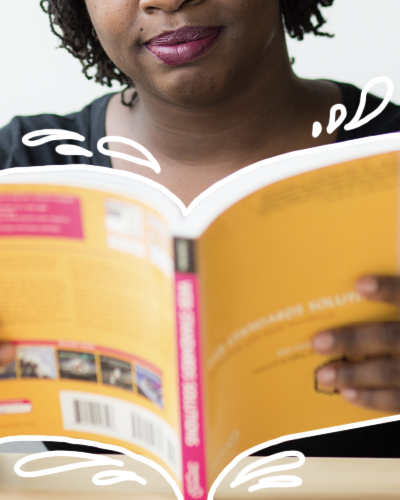
2. Testing yourself against a workbook or private program.
However, many workbooks or independent programs that aren’t CEFR-accredited also use CEFR guidelines and are great measuring tools.
This is helpful because when using a program like this, you can see progress as you make it.
But this is unhelpful because just because you passed through a chapter doesn’t mean you’ve mastered it.
3. The general CEFR guidelines below.
Finally, you can measure your own abilities against those described in this diagram, presented by the CEFR.
This is helpful because you can gauge your level in a more organic way.
But this is unhelpful because without outside help students are likely to inflate their grade by a level (or two).
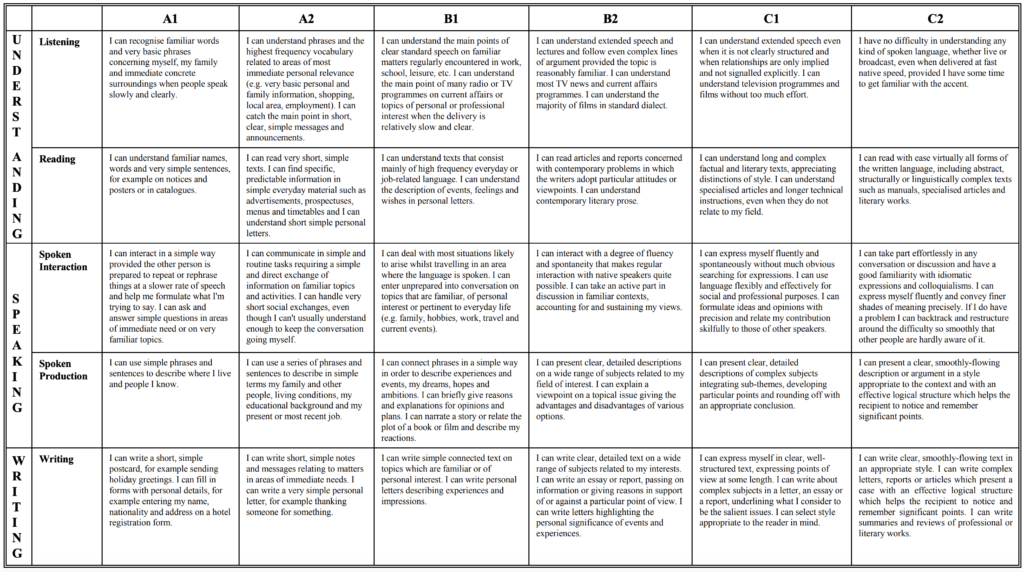
2b. Measuring your Vocab
As you’ve seen above, the CEFR does not lay out any specific vocabulary or grammar goals across the levels.
That’s because each language is unique, each teaching style is unique, and each student’s own way of speaking is unique.
However, thanks to some researchers and institutions, we have an idea of what your vocabulary size could look like at various levels.
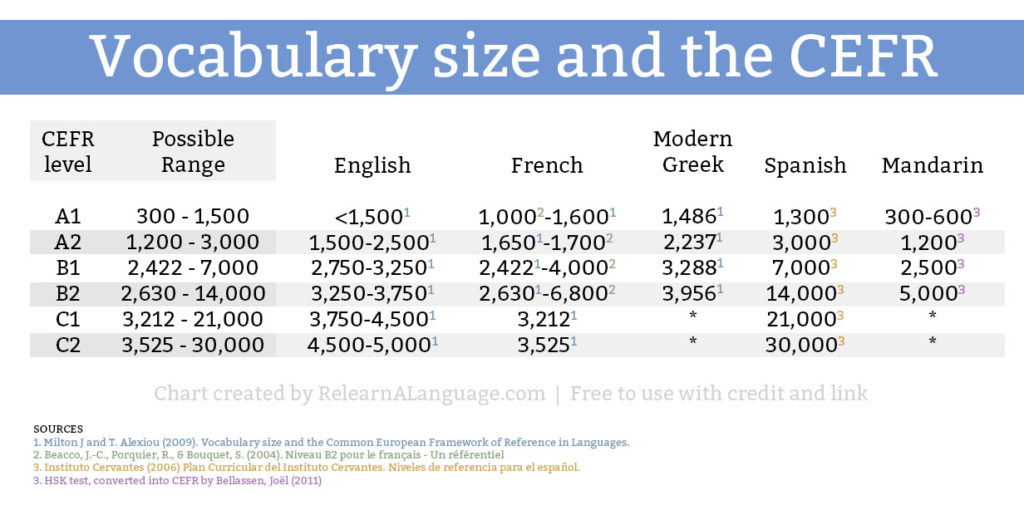
Now: these are huge ranges!
BUT WHY?
We can see two categories of studies in the edited chart below:
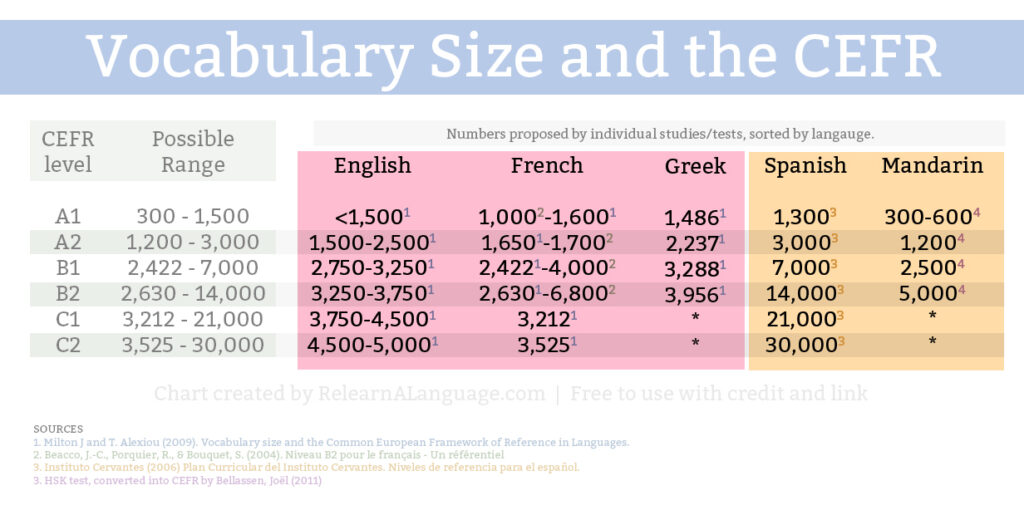
For English, French, and Modern Greek, researchers tested students who had already passed various CEFR level exams. This was to see what their real vocabulary level was like.
In Spanish and Mandarin, two institutions that administer tests (Instituto Cervantes and the HSK) have dictated to teachers and programs what they expect of students at various levels.
So the first thing you might notice is that students often pass CEFR or HSK tests despite having much lower levels than the institutions would expect.
Grade inflation is real!
When deciding what your level is based on your vocabulary size, aim closer to the bar Instituto Cervantes has set.
Just know that if you have classmates who seem to have totally different vocabulary sizes than you, it’s likely because of grade inflation or deflation.
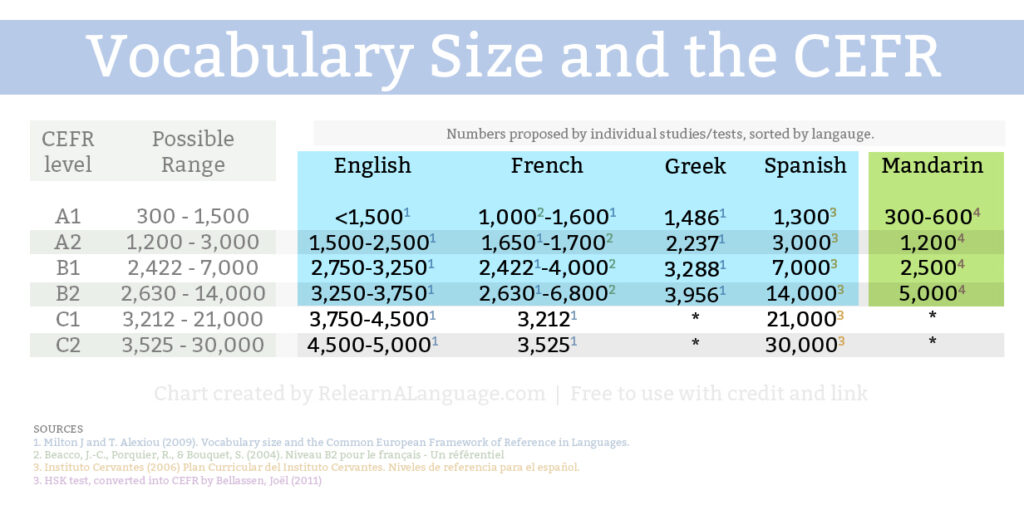
The second thing you might notice is that Mandarin sets a much lower bar.
Mandarin is an exceptionally hard language like we saw in the “how long does it take to learn a language” calculator.
It also has it’s own test and testing levels: the HSK, not the CEFR.
So, if you’re learning a non-European language, don’t hold yourself to the standards of someone learning Spanish or French. Your metrics are different.
So how do you actually measure how many words you know?
1. Online tests.
There are plenty of online tests, but unfortunately, they’re almost exclusively in English.
2. Apps.
Apps aren’t normally the best way to learn a language. But, with a few apps in particular, you can count how many words you actually know.
- Lingq – A reading and listening app that marks any new words you encounter as known or unknown. (Unfortunately it counts things like “walk/walks/walked” as different words and not versions of the same word, but still helpful as an idea.)
- Anki – A flashcard app. If you enter every word you learn as you study a language (like I do), by the end you’ll have a good idea. (This is my prefered way.)
- Combining various app counts – are you using a few different apps? You should be able to figure out how many words you know through each one, but make sure you account for some overlapping vocabulary.
2c. Case Study
So now you know how long it takes to learn a language.
You also know how to know what CEFR level you have.
Want to see it put all together?
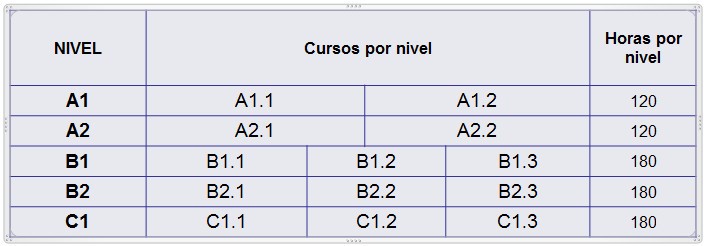
As you can see from the above table (made by Instituto Cervantes for Spanish students), our rough approximation of how long does it take to learn a language can be divided by language level.
- A1 = 15% of study time
- A2 = 15% of study time
- B1 = 25% of study time
- B2 = 25% of study time
- C1 = 25% of study time
In this video, I’ll show you how I used all of the information in this article to:
(1) determine the level of my current target language and
(2) see if I’m on the right track for making progress on time.
So how long does it really take to learn a language?
By now, you should have your own custom answer, PLUS know how to use that information as you make progress with your language!
Do you have any questions?
Want some clarity on anything?
Let me know in the comments so I can improve this article!
My goal is always to create amazing posts that people will really benefit from, so I’m excited to answer any questions you might have while you use this calculator!

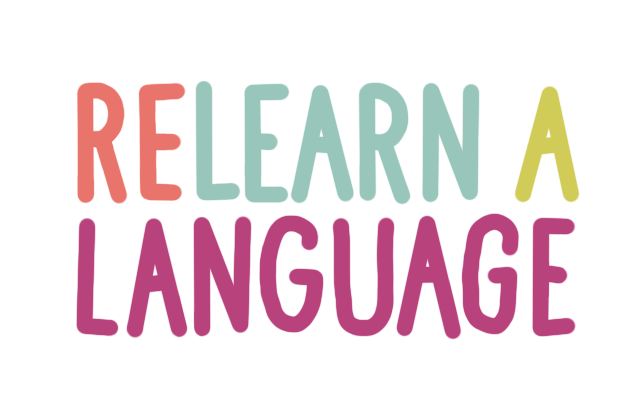
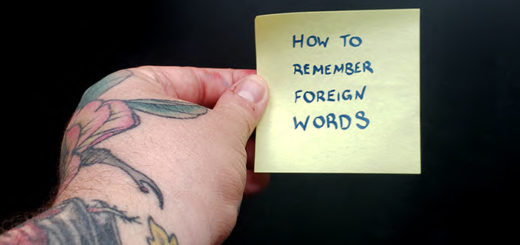


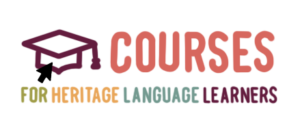
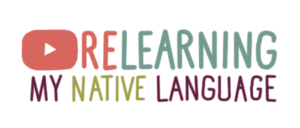
Hi, in 2c the percentages add up to 105% …
Hi! Thanks for pointing it out in case someone else is wondering later, but yup–that’s why it says “rough approximation”. 15%, 25%, etc are just a little less scary for people than repeating fractions 🙂 Because this article is a combination of research and personal experience, my goal was to make it as user-friendly as possible.